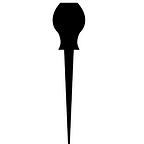by Jessanne Collins
January 1980. A nation nurses a sepia-hued hangover. It’s the dawn of a new decade, and while the polyester may not be packed away just yet, change is in the air. For the first time in history, there’s an erection in the pages of a glossy magazine.
Playgirl is eight years old and boasts a circulation of 10 million. It’s clearly hit some kind of cultural nail on the head, borrowing Playboy’s patented aspirational hedonism and appropriating it for the fun ’n’ flirty feminist set. This month, the centerfold is a sun-kissed California blonde named Geoff Minger. He reclines, shinily, on a set of clean white sheets. In one shot — in pointed contrast to the afternoon light on the drawn venetian blinds, the purple flowers on the bedside table — his penis just stands there, like, yeah?
It’s not like the late ’70s were some kind of disco Camelot, but there was something kind of soft-focus about them. Jimmy Carter was president, cigarettes were mainstream, air travel was exotic, and for another year or so anyway, sex wasn’t gonna kill you. It’s like I overheard this lady say yesterday, apropos of a Thelma Houston song playing at a cafe: “Everybody was just so beautiful in the ‘70s! Everything was so shiny and sparkly!” And there’d been plenty of penises in Playgirl’s pages, since its second issue, in the summer of 1973 (readers had complained when there were none in the debut), sandwiched softly between ads for Summer’s Eve and fashion spreads flowing with macrame.
But a full erection! That was something else. Something deliberate, something direct. “From the beginnings of Western civilization the penis was more than a body part,” David M. Friedman writes in his 2001 cultural history of the organ, A Mind of Its Own. “It was an idea, a conceptual but flesh-and-blood gauge of man’s place in the world…. It is possible to identify the key moments in Western history when a new idea of the penis addressed the larger mystery of man’s relationship with it and changed forever the way that organ was conceived of and put to use.”
So how better to greet this particular new decade than with a (sorry) stiff salute? By this time next year, John Lennon would be dead and Ronald Reagan on his way into the White House. Shoulder pads and neon colors are coming down the runway, and soon to be sporting them, a new archetype: the busy career woman, slinging a diaper bag in four-inch pumps. She’ll still be making a fraction of what her male colleagues bring home, though, and with all the domestic labor on her to-do list, she’ll have less time and patience for fantasy and romance and nonsense. The era of chiffon and divans is over.
In its way, Playgirl, in attempting to define and capitalize upon woman’s ever-shifting “place in the world,” changed again the way the organ was conceived of and put to use. Hear that distant synth beat? Madonna is coming. Samantha Jones is at her heels. It’s hard to imagine either of them, or anything that came next, in a society where women and men, in theory anyway, weren’t equal-opportunity oglers.
Jessanne Collins is an editor at Mental Floss and the coproprietor of Finite + Flammable.
